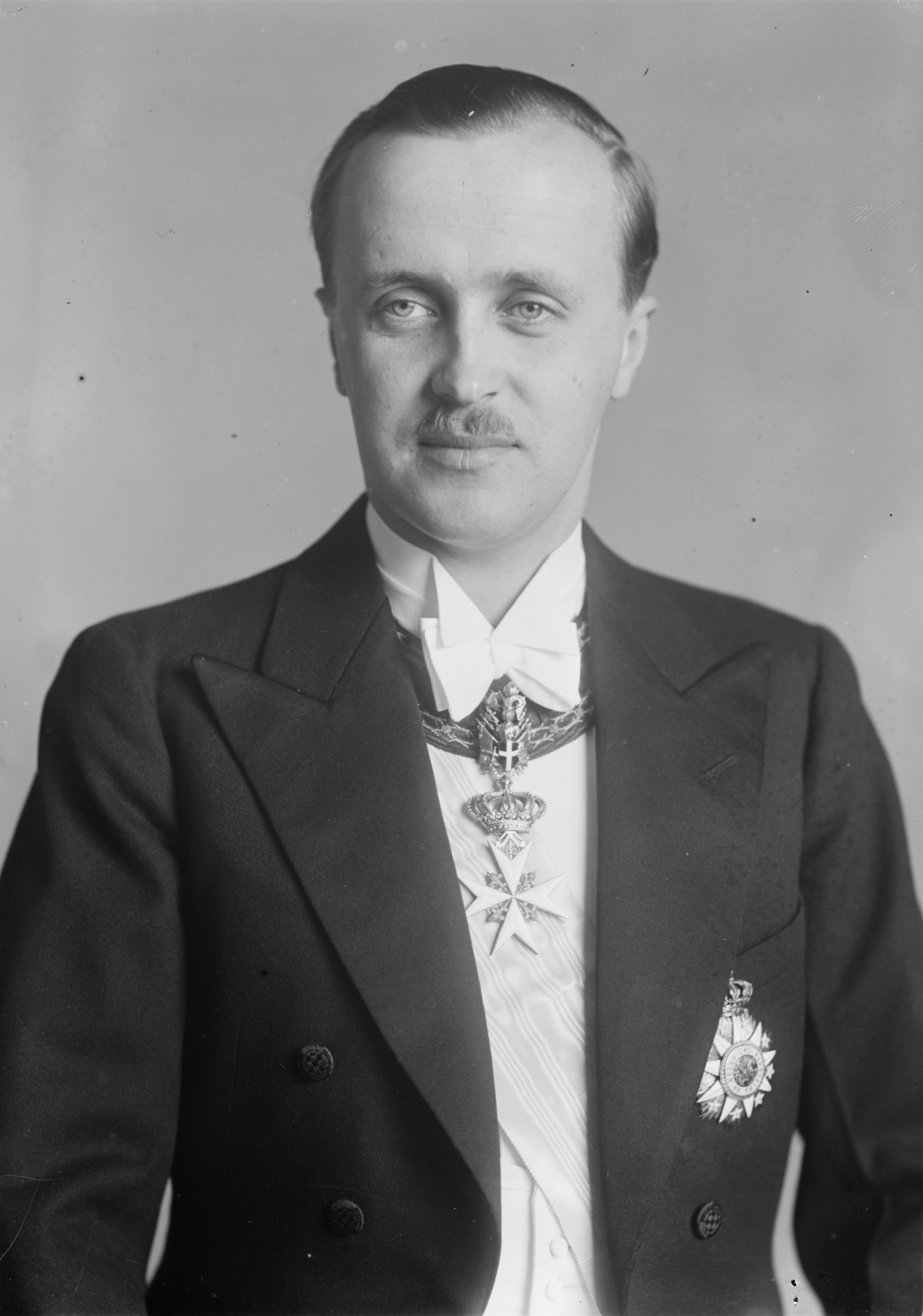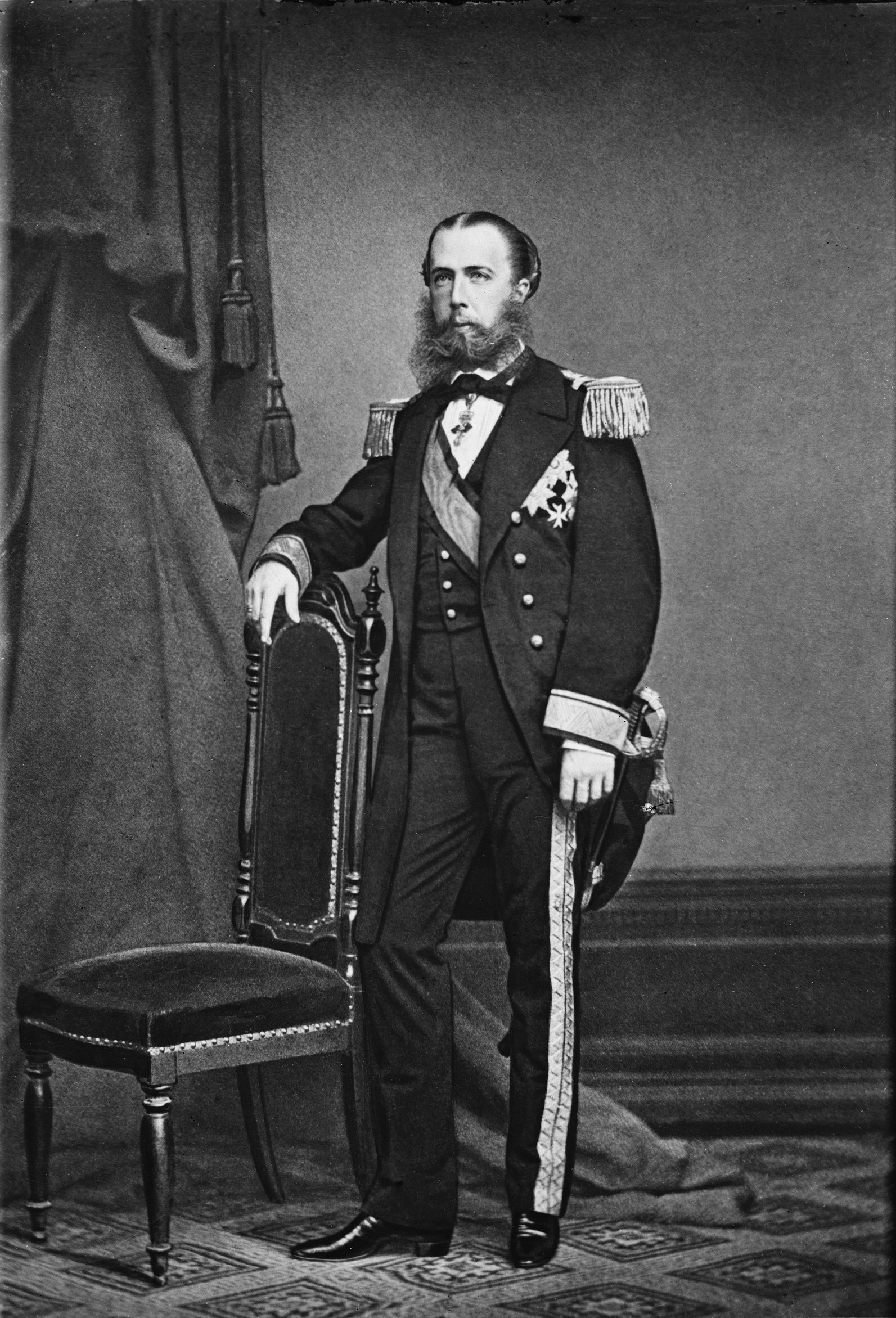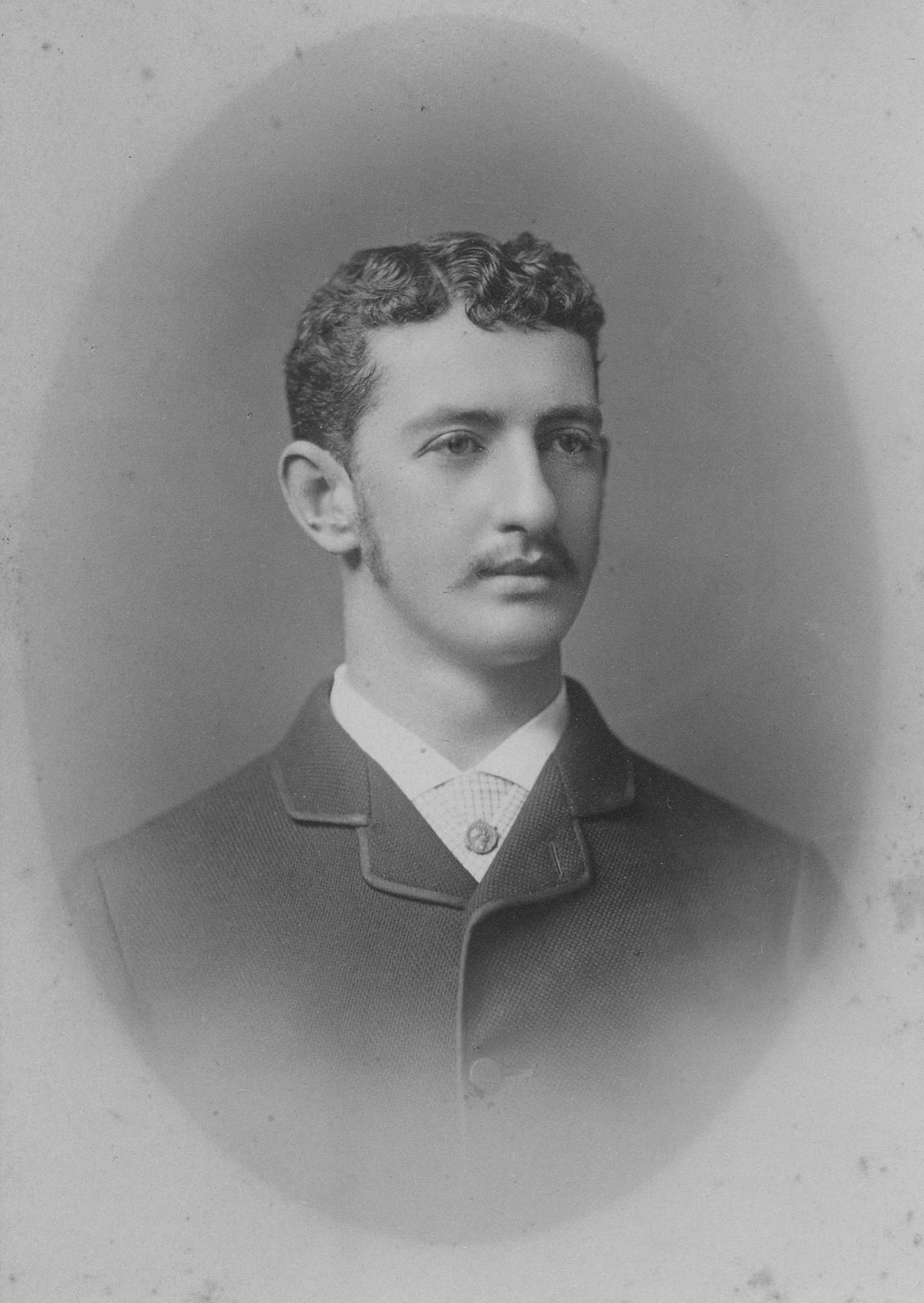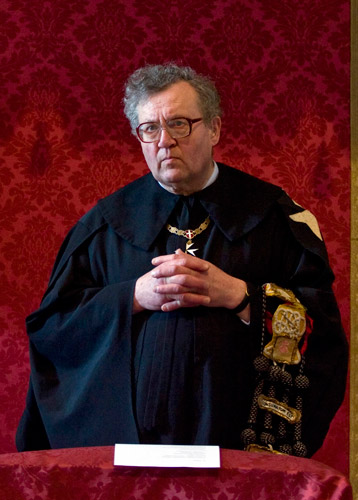.png) |
| King Manuel II |
In 1910 a republican revolution toppled the young King Manuel II of Portugal (1889-1932), sending him and the rest of the Royal Family into exile.
Although Catherine the Great succeeded her husband on the Russian throne by overthrowing him, in a highly unusual and I think unprecedented situation, I believe a strong case could be made that the de jure successor to Manuel II from both a genealogical and a constitutional point of view should perhaps have been his own wife.
The criteria for succession to the Portuguese throne was set out in Part V Chapter IV of the Constitutional Charter of the Portuguese Monarchy, promulgated on 29 April 1826:
Article 86. The Lady Doña Maria II by the grace of God and by the formal abdication and cession of the Lord Dom Pedro I Emperor of Brazil shall reign always in Portugal
Article 87. Her legitimate descendants shall succeed to the throne according to the regular order of primogeniture and representation always preferring the anterior line to the posterior in the same line the nearest degree to the most remote in the same degree the male to the female in the same sex the oldest to the youngest
Article 88. The line of the legitimate descendants of the Lady Doña Maria II becoming extinct the Crown shall pass to the collateral branch
Article 89. No foreigner shall be able to succeed to the Crown of the kingdom of Portugal
Article 90. The marriage of the hereditary Princess Presumptive to the Crown shall be made by approval of the King and never with a foreigner should the King not be in existence at the time of the settling of this marriage it shall not be effected without the approbation of the General Cortes Her husband shall have no share in the Government and shall only be styled King after he has got a son or daughter by the Queen
In 1910, the first person undisputedly meeting the eligibility criteria, namely legitimate descent from Queen Maria II and the ‘foreigner’ test, and so in the line of succession to the Portuguese throne was:
- Infante Afonso, Duke of Porto (1865-1920) - the king’s uncle
The only other member of the Portuguese Royal Family alive at the time was Infanta Antonia, by marriage Princess of Hohenzollern (1845-1913), the king’s great aunt as a daughter of Queen Maria II. She however had renounced her rights to the throne on 9 September 1861 upon her marriage to Leopold, Prince of Hohenzollern. However, not long after this renunciation the succession became a cause of serious concern due to a typhus fever outbreak in late 1861 claiming the lives of three of Antonia's five brothers in quick succession.
On 6 November the fourth brother and third in the line of succession, Infante Fernando died. Five days later the childless eldest brother King Pedro V also succumbed to typhus and was succeeded on the throne by the unmarried second brother Luiz, Duke of Porto. The third eldest brother João, Duke of Beja, who had become heir upon the succession of the new king Luiz died on 27 December, leaving the youngest brother Augusto, Duke of Coimbra, who was himself seriously ill with typhus, as the sole remaining heir to the throne who was descended from Queen Maria II.
As a result of the anxiety over the succession a bill was passed by parliament on 30 December 1861 (published on 16 June 1862) which allowed for the possibilty of succession rights to be restored to Infanta Antonia and her elder sister Infanta Maria Ana who, like Antonia, had renounced her own succession rights upon her 1859 marriage to Prince Georg of Saxony.
On 4 September 1913 the exiled King Manuel was married to his second cousin Princess Augusta Victoria of Hohenzollern (1890-1966), the granddaughter of Infanta Antonia.
 |
| Queen Augusta Victoria of Portugal |
Article 18 of the Portuguese Civil Code, which became law on 1 July 1867 and was in force at the time of the 1913 wedding, set out six ways “in what manner the Quality or Capacity of Portuguese Citizenship is acquired”. Point six of the civil code stated citizenship was acquired by:
6. A foreign woman married to a Portuguese citizen
Therefore upon her marriage to King Manuel the new Queen Augusta Victoria of Portugal – a German citizen by birth – indisputably acquired Portuguese citizenship. This fact is confirmed, for example in the 1921 United Kingdom Census where King Manuel and Queen Augusta Victoria are both stated to be Portuguese citizens.
 |
| The 1921 Census |
Thinking back to the criteria for succession to the Portuguese throne, from the point of her marriage to King Manuel arguably Queen Augusta Victoria could have become a potential heir to the Portuguese throne via her grandmother, by virtue of being the only one of her grandmother’s descendants to meet both Article 87 – legitimate descendant of Maria II - and Article 89 – the nationality test. The only complication being her grandmother's renunciation.
As the marriage of King Manuel II and Queen Augusta Victoria would prove to be childless, when the king died in 1932 the person with a good claim to succeed him was his own wife Queen Augusta Victoria being his closet Portuguese relative descended from Queen Maria II, however of course this would depend on the restoration of succession rights to the line of Infanta Antonia which was possible on the extinction of the male line of Queen Maria II, which had occurred on the death of King Manuel. Although she remarried in 1939 to Count Robert Douglas, a Swedish nobleman, Queen Augusta Victoria remained childless. So any theoretical claim to the Portuguese throne died with her in 1966.
 |
| Potential heirs on the death of Manuel II |
In monarchist circles no thought seems to have ever been given to Queen Augusta Victoria's seemingly strong claim to being acclaimed the de jure Queen regnant of Portugal upon the unexpected death of her husband, instead the Miguelist pretender to the Portuguese throne Duarte Nuno of Braganza (1907-1976) became the widely acknowledged heir to the Portuguese throne, filling the void for a monarchist movement which had been anxious about the succession due to the lack of a recognised heir for King Manuel.
The so called Miguelist line of the House of Braganza descends from Miguel of Braganza (1802-1866) who usurped the throne of Portugal from his niece Queen Maria II (1819-1853) in 1828, proclaiming himself king instead. After losing the subsequent Portuguese civil war fought between Miguel and his supporters who wanted an absolute monarchy for Portugal, and those of Maria II ,who wanted a constitutional monarchy, Miguel and his descendants were banished from Portugal by a six article law passed on 19 December 1834 by Queen Maria II. The first two articles stated:
Article 1. The former Infante D. Miguel and his descendants are forever excluded from the right to succeed to the Crown of the Kingdoms of Portugal, the Algarve's and their Dominions.
Article 2. The same former Infante D. Miguel, and his descendants are banished from Portuguese territory, so that they may never enter it, nor enjoy any civil or political rights: the conservation or acquisition of any property is forbidden to them, whatever the title, and the nature of the same: the assets and private property of the former Infante D. Miguel, of whatever kind, are subject to the general rules of indemnity.
Despite this, in their banishment the Miguelist line continued to claim the Portuguese throne and plotted to replace the descendants of Queen Maria II on the throne. After the death of King Miguel in 1866, he was succeeded in his claims by his only son and namesake Dom Miguel II of Braganza (1853-1927).
 |
| Miguel II of Braganza |
After the overthrow of King Manuel in 1910, reconciliatory talks between the adherents of King Manuel and those of the Miguelist pretender Dom Miguel II took place. In 1912 these negotiations yielded the so called Pact of Dover, whereby it was allegedly agreed that:
- Dom Miguel of Braganza and his family, recognised the rights of King Manuel to the throne of Portugal.
- In the absence of a legitimate heir for, or succession to the throne of, either King Manuel or his uncle Infante Afonso, Duke of Porto, the succession to the throne of Portugal shall pass to Dom Duarte Nuno, the third son of Dom Miguel.
- Dom Miguel and his family's Portuguese rights are restored.
- The lost titles and honours of Dom Miguel, his Family and their supporters will be restored to them under the sole clause that this restitution would not entail any charges to the Public Treasury.
By apparently designating the third son Duarte Nuno as an eventual heir to the throne, the pact apparently purposedly bypassed the eldest son Dom Miguel (1878-1923), styled by his father as Duke of Viseu since his 1909 marriage to the American heiress Anita Stewart, and their descendants (some of whom were then living), and the second son Dom Francisco José (1879-1919) and any potential legitimate descendants he may have.
Due to a lack of documentary evidence regarding the so called Pact of Dover, its existence has been disputed and never proven.
On 31 July 1920 the then 12 year old Duarte Nuno succeeded as the Miguelist pretender upon the renunciation of his father Dom Miguel. Because of his age, Duarte Nuno's aunt Dona Aldegundes of Braganza was appointed by Dom Miguel as regent with the title of Duchess of Guimarães in a separate decree. Duarte Nuno's elder half-brother Miguel, Duke of Viseu had renounced his own claim to the throne ten days prior to their father, on 21 July 1920, for both himself and his descendants.
A second attempt at reconciling the Miguelist line with that of King Manuel took place in 1922 in Paris. The so called Pact of Paris was signed by a representative of King Manuel and a representative of Duarte Nuno. The pact stated:
 |
| The Pact of Paris |
The undersigned, having carefully analysed the political situation in the country and convinced that they interpret the feelings of the vast majority of Portuguese monarchists, who are the majority of the country, sincerely and loyally wish to see an end to the dissensions between the monarchist family, which only benefit the parties of the Republic to the grave detriment of our cause and our country;
Having heard their August Mandates and been duly authorised by them, they declare:
The first signatory:
a. that his August Principal, in the absence of a direct heir, will accept the Successor appointed by the General Cortes of the Portuguese Nation.
b. He will also accept the resolutions of the same Cortes regarding the Political Constitution of the restored Monarchy.
c. That, in agreement with the Holy See, the religious question will be resolved by means of a decree to be submitted to the Cortes.
That, in view of the foregoing declarations, his August Principal asked and recommended all his supporters to accept Dom Manuel II as King of Portugal and to unite loyally under the same flag that shelters all monarchists, which is the flag of the Fatherland and the flag that will save Portugal.
Done at Paris, on 17th April 1922.
(a) Ayres d'Ornellas [representative of D. Manuel]
(a) Count of Almada and Avranches [representing D. Duarte Nuno]
The Pact of Paris clearly indicates King Manuel, as a constitutional monarch, would not (nor could he) alter the Constitutional Charter of the Portuguese Monarchy which set out the criteria for the succession to the Portuguese throne, or repeal the law of banishment of 19 December 1834 which excluded the descendants of King Miguel from the Portuguese throne. Instead the issue of a successor was left up to the parliament of a restored monarchy.
 |
| Duarte Nuno, Duke of Braganza |
From a legal and monarchist point of view the 1920 renunciation of the Duke of Viseu seems slightly dubious, as not only did he purport to renounce his own succession rights, but also the rights of his then living children thereby infringing the rights of minors. Since their births the three children of the Duke of Viseu were accorded full royal status by the Almanach de Gotha. The Duke of Viseu’s grandson, Miguel de Braganza (born 1951), is the current senior descendant of the House of Braganza by right of primogeniture, but he does not dispute the validity of his grandfather's renunciation or purse any claim to the Portuguese throne.
However, because of the 1834 law (which was only repealed in 1950) banishing the Miguelist line from Portugal and excluding them from the Portuguese throne, credible arguments have been put forward in favour of the Dukes of Loule having succeeded as the legitimate heirs to the Portuguese throne upon the death of King Manuel in 1932.
The arguments in favour of the Dukes of Loule are based on their legitimate descent from a collateral member of the Portuguese Royal Family the Infanta Ana de Jesus Maria of Braganza (1806-1857), the sister of King Miguel and aunt of Queen Maria II, and the fact that upon King Manuel’s death in 1932 they were the only collateral branch who still held Portuguese citizenship.
 |
| Pedro, Duke of Loule |
While the current Duke of Loule, Pedro de Mendoça, has actively advanced a claim to the Portuguese throne in recent years, first Duarte Nuno and after his death his son Duarte Pio (born 1945), both managed to firmly establish themselves as the widely recognised legitimate heir to the throne of Portugal after the death of King Manuel.
If Queen Augusta Victoria was the legitimate successor to her husband King Manuel and held this status until her death in 1966, because the 1834 law that excluded the Miguelist line from the throne and banished them from Portugal had been legally repealed in 1950 and their Portuguese citizenship restored, then from 1950 they would have re-entered the line of succession and so as the next senior collateral branch with Portuguese nationality, then Duarte Nuno would have legitimately succeeded Queen Augusta Victoria in 1966.
Ultimately as envisaged by King Manuel in the 1922 Pact of Paris, should the Portuguese monarchy ever be restored then the king will inevitably be chosen by the Portuguese parliament and their absolute indisputable legitimacy will derive therein from.
.jpg/800px-Jantar_dos_Conjurados.2008_029_(crop2).jpg) |
| Duarte Pio, Duke of Braganza |
Sources
- Marcelino de Almeida Bessa, José, Manual Parlamentar para uso dos Senhores Deputados da Nação Portuguesa coligido e anotado Chefe da Segunda Repartição da Secretaria da Camara dos Senhores Deputados, Imprensa Nacional, Lisbon, 1901, pp 18-19 [text of Part V Chapter IV of the Constitutional Charter of the Portuguese Monarchy of 29 April 1826; and text of the 30 December 1861 law regarding the conditions for the restoration of succession rights to Infanta Maria Ana and Infanta Antonia]
- Contrato matrimonial entre sua alteza e serenissima senhora infanta dona Antonia e sua alteza o serenissimo principe Leopoldo de Hohenzollern Sigmaringen assignado em Lisboa pelos respectivos plenipotenciarios aos 6 de junho de 1861, Imprensa Nacional, Lisbon, 1862 [text of the marriage contract and renunciation of Infanta Antonia]
- The Morning Post, London, 1 January 1862, p4 [discussion of the Portuguese succession following the deaths in quick succession of King Pedro V and a number of his brothers in 1861]
- Codigo civil portuguez approvado por carta de lei de 1 de julho de 1867, Em Casa de A. R. da Cruz Coutinho, Porto, 1877, pp 4-5 [text of the law regarding the acquisition of Portuguese nationality]
- Resenha das familias titulares e grandes de Portugal, Empresa Editora de Francisco Arthur da Silva, Lisbon, 1883, pp xxi-xxii [noting Infanta Antonia’s succession rights could be restored in the absence of male descendants from the Queen Maria II]
- Ferreira Borges de Castro, José, Collecção dos tratados, convenções, contratos e actos publicos : celebrados entre a coroa de portugal e as mais potencias desde 1640 ate ao presente, Volume VI, Imprensa Nacional, Lisbon, 1857, pp 162-164 [text of the 19 December 1834 law of banishment of King Miguel and his descendants]
- "Successor expects throne", New York Times, New York, 6 July 1932, p 19 [example concerning the positioning and recognition of Dom Duarte Nuno as legitimate successor to King Manuel]
- Andrade, José Luís, Ditadura ou Revolução? A verdadeira história do dilema ibérico nos anos decisivos de 1926-1936, Casa das Letras, Alfragide, 2017, ISBN 9897416536 [regarding the alleged 1912 Pact of Dover]
- A Questão Dinástica Documentos Para a Historia Mandados coligir e publicar pela Junta Central do Integralismo Lusitano, Empresa Nacional de Industrias Gráficas, Limitada, Lisbon, 1921, pp 47-48 [text of the renunciation of Dom Miguel II of Braganza in favour of Dom Duarte Nuno; text of the decree of Dom Miguel II appointing Dona Aldegundes of Braganza as regent of Dom Duarte Nuno; text of the renunciation of Dom Miguel, Duke of Viseu]
- Cabral, Antonio, El-Rei D. Duarte II: rei morto, rei posto, a sua vida, os seus direitos, paginas de historia, Livraria popular de Francisco Franco, Lisbon, 1934, pp 74-75 [text of the 1922 Pact of Paris]
- Almanach de Gotha, 160th ed. Justus Perthes, Gotha, 1923, p 31 [example concerning the recognition of the royal status of the children of Dom Miguel, Duke of Viseu even after their fathers renunciation]
- Saudaçõ, Página Oficial de la Casa Real de Portugal, [website of the Duke of Loule regarding his claim to the Portuguese succession]
- Law 2:040, Diário do Governo, 27 May 1950 [publication of law 2:040 which revoked the laws of banishment and proscription of 19 December 1834, concerning the Miguelist line, and of 15 October 1910, concerning King Manuel II and his family]
.png)






.jpg/800px-Jantar_dos_Conjurados.2008_029_(crop2).jpg)


.jpg)





